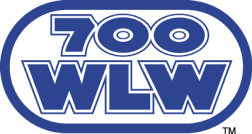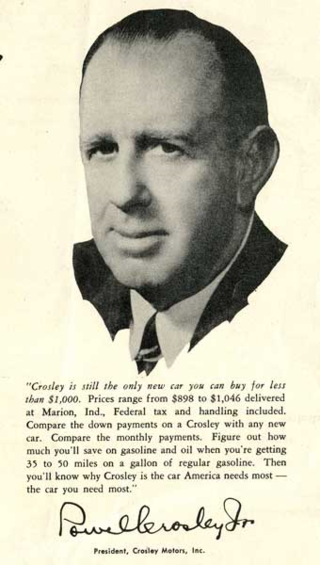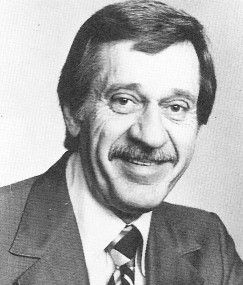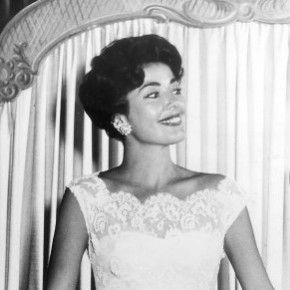
WCMH-TV is a television station in Columbus, Ohio, United States, affiliated with NBC and owned by Nexstar Media Group. The station's studios are located on Olentangy River Road near the Ohio State University campus, and its transmitter is located on Twin Rivers Drive, west of downtown Columbus.

WLW is a commercial news/talk radio station licensed to Cincinnati, Ohio. Owned by iHeartMedia, WLW is a clear-channel station, often identifying itself as “The Big One”. Its studios are located in Sycamore Township.

Powel Crosley Jr. was an American inventor, industrialist, and entrepreneur. He was also a pioneer in radio broadcasting, and owner of the Cincinnati Reds major league baseball team. In addition, Crosley's companies manufactured Crosley automobiles and radios, and operated WLW radio station. Crosley, once dubbed "The Henry Ford of Radio," was inducted into the Automotive Hall of Fame in 2010 and the National Radio Hall of Fame in 2013.

WDTN is a television station in Dayton, Ohio, United States, affiliated with NBC. It is owned by Nexstar Media Group, which provides certain services to Springfield, Ohio–licensed WBDT, a de facto owned-and-operated station of The CW, under a local marketing agreement (LMA) with Vaughan Media. The two stations share studios on South Dixie Drive in Moraine.

WLWT is a television station in Cincinnati, Ohio, United States, affiliated with NBC and owned by Hearst Television. The station's studios are located on Young Street, and its transmitter is located on Chickasaw Street, both in the Mount Auburn neighborhood of Cincinnati.
The Crosley Broadcasting Corporation was a radio and television broadcaster founded by radio manufacturing pioneer Powel Crosley, Jr. It had a major influence in the early years of radio and television broadcasting, and helped the Voice of America carry its message around the world.

Paul Dixon was a daytime television personality and talk show host in Cincinnati, Ohio. He began his career with radio shows in New York City and Chicago before being enticed to come to then-radio station WCPO in Cincinnati as a news reporter and announcer around 1945. He was chosen best newscaster in Cincinnati in 1947 after conducting an interview with men trapped in a collapsed downtown building.

Wendy Barrie was a British-American film and television actress.
Multimedia Entertainment, Inc. was an American television production/distribution company originally formed in 1968.
The Phil Donahue Show, also known as Donahue, is an American television talk show hosted by Phil Donahue that ran for 26 years on national television. Its run was preceded by three years of local broadcast on WLWD in Dayton, Ohio, and it was broadcast nationwide between 1970 and 1996.
The Uncle Al Show was a children's television program originating in Cincinnati. The show was hosted by Cleveland native Al Lewis (1924–2009), and later was co-hosted by his wife, Wanda.

Ruth Lyons was a pioneer radio and television broadcaster in Cincinnati, Ohio. It is said Ruth Lyons accidentally invented the daytime TV talk show. Like Arthur Godfrey and others of the era, Lyons built a TV empire.

The Wendy Barrie Show is an American talk show hosted by Wendy Barrie, which aired from November 10, 1948, to September 27, 1950.

Mary Joan Okum, known by her performing name Bonnie Lou, was an American musical pioneer, recognized as one of the first female rock and roll singers. She is also one of the first artists to gain crossover success from country music to rock and roll. She was the "top name" on the first country music program regularly broadcast on a national TV network. Bonnie Lou was one of the first female co-hosts of a successful syndicated television talk show, and a regular musical performer on popular shows in the 1960s and 1970s. She "was a prime mover in the first days of rockabilly," and is a member of the Rockabilly Hall of Fame.
Robert Gerald Shreve was a first-generation television broadcasting personality based in Cincinnati, Ohio.
Midwestern Hayride, sometimes known as Midwest Hayride and later Hayride, was an American country music show originating in the 1930s from radio station WLW and later from television station WLW-T in Cincinnati, Ohio. During the 1950s it was carried nationally by NBC and then ABC television.

Glenn Ryle Schnitker (1927-1993) was a long-time television personality in Cincinnati, Ohio. He is best remembered by Cincinnatians for hosting the Skipper Ryle Show for seventeen years on WKRC Television.
Midsummer Rock is a television program based on the Cincinnati Pop Festival. The 90-minute TV version featured Alice Cooper, Mountain, Grand Funk Railroad, The Stooges, and Traffic.
William Lorne Nimmo was a television and radio personality whose career spanned seven decades.

Dotty Mack was a lip sync actress and mime artist, known as the "Queen of Pantomime" for her appearances in The Paul Dixon Show (1951), The Dotty Mack Show (1953) and Cavalcade of Stars (1949).












